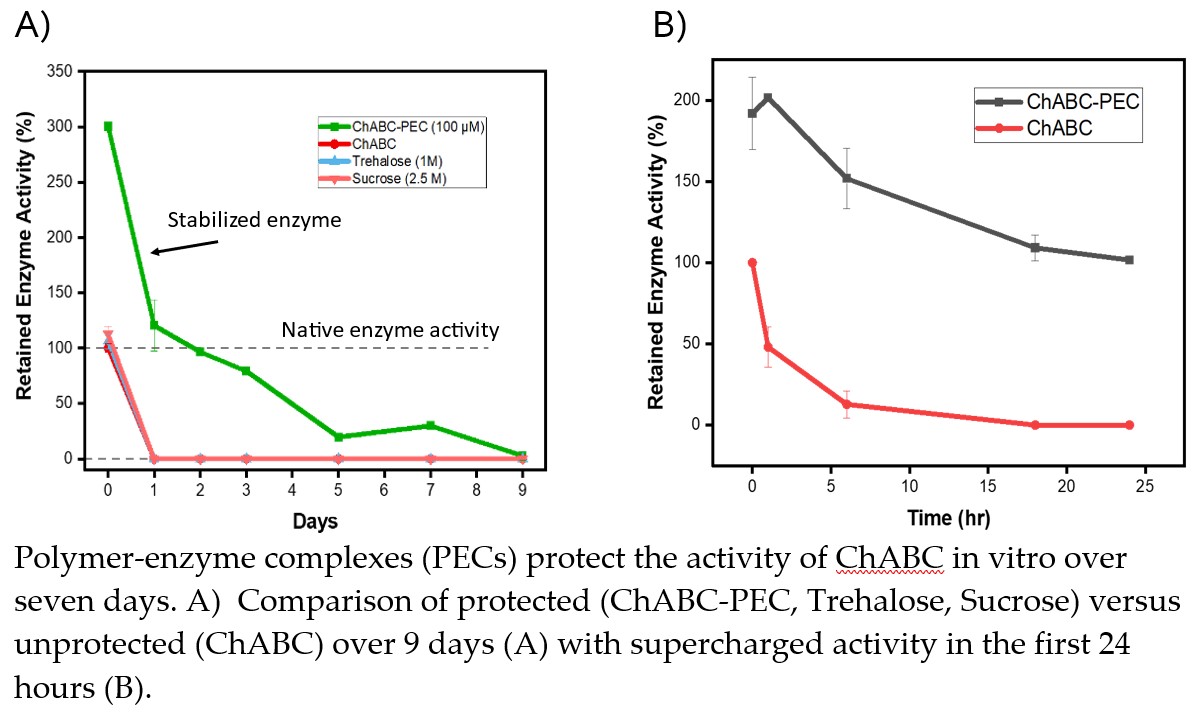
Invention Summary:
Spinal cord injury (SCI) leads to the formation of scar tissue. The scarring leads to the toughening of the extracellular matrix, or the cellular environment. One of the major concerns of SCI is the prevention of neuronal connection recovery, which can lead to paralysis or reduced control of the nervous system. For treating SCI-related scarring, scientists have identified Chondroitinase ABC (ChABC), an enzyme that breaks down the extracellular network and allows for regeneration of neuronal axons. However, a major limitation to this approach is that ChABC is temperature-sensitive and there has been no best mode to preserve the enzymes’ optimal function.
Researchers at Rutgers have developed a new formulation that prolongs the stability and function of chABC for seven days at 370C. By using artificial intelligence and robotics, the researchers identified a polymer-enzyme complex (PEC) that was predicted to maintain the enzymatic activity of ChABC for days. In vitro, the various combinations of enzyme and polymer supercharged initial enzyme activity in the first 24 hours then maintained the enzyme’s activity at 30% of initial performance up to one week. In addition, this concoction did not cause any toxicity in neuronal cells nor led to an inflammatory response.
Advantages:
- Increases stability of enzyme activity
- Reduces amount and frequency of enzyme dosage needed to inject in patients
Market Applications:
- Injections for SCI treatments
- Treatment for acute and chronic SCI scars
- Stabilization of other enzymes
Intellectual Property & Development Status: Patent pending. Available for licensing and/or research collaboration.
Publications:
Kosuri, S., et al. (2022) Machine-assisted discovery of chondroitinase ABC complexes towards sustained neural regeneration. Advanced Healthcare Materials 11 (10).